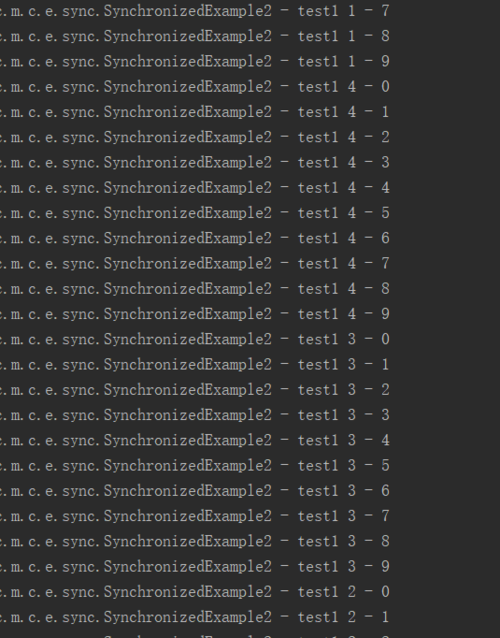不同对象调用不同synchronized静态方法会如何?
package com.mmall.concurrency.example.sync;
import lombok.extern.slf4j.Slf4j;
import java.util.concurrent.ExecutorService;
import java.util.concurrent.Executors;
@Slf4j
public class SynchronizedExample2 {
// 修饰一个类
public static void test1(int j) {
synchronized (SynchronizedExample2.class) {
for (int i = 0; i < 10; i++) {
log.info("test1 {} - {}", j, i);
}
}
}
// 修饰一个静态方法
public static synchronized void test2(int j) {
for (int i = 0; i < 10; i++) {
log.info("test2 {} - {}", j, i);
}
}
public static void main(String[] args) {
SynchronizedExample2 example1 = new SynchronizedExample2();
SynchronizedExample2 example2 = new SynchronizedExample2();
ExecutorService executorService = Executors.newCachedThreadPool();
executorService.execute(() -> {
example1.test1(1);
});
executorService.execute(() -> {
example2.test2(2);
});
}
}
Ps:这里一定保证是 test1 0-9 然后 test2 0-9 吗?为什么?按理说不同对象不同方法,应该互相不受影响了,难道这时候是线程池起到作用了?
865
收起









